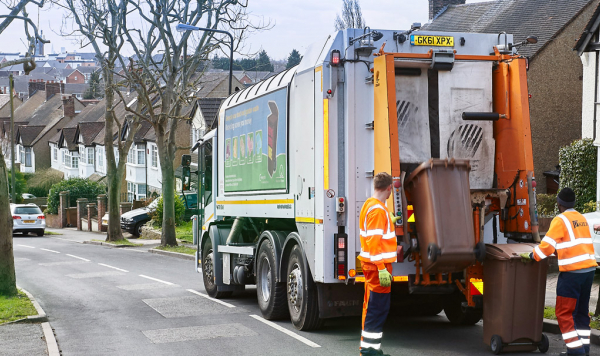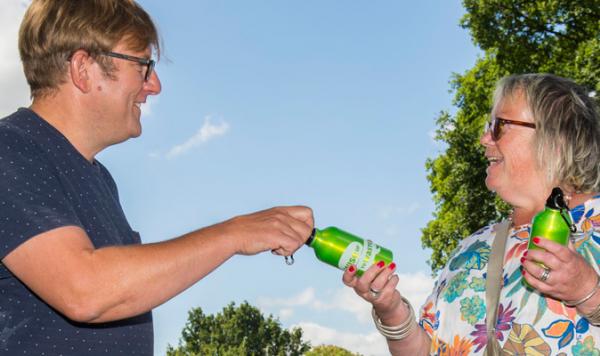Request
Request for information about bioplastics/compostable plastics.
How much is being collected in North London at the moment? Where is it found and how is it affecting the recycling and waste management process? How much food and recycling is rejected from the waste stream and sent to landfill due to contamination from these new materials? Finally, what are the plans to manage these materials in the future?
Response
- NLWA Response
- How much bioplastic and compostable plastic is collected in north London and where is it found?
The popularity of bioplastics/compostable plastics has increased in recent years, and compostable sacks for example, showing the seedling logo and manufactured to quality standard BSEN 13432 are accepted and distributed in north London as caddie liners for food waste containers. However, with the exception of easily recognisable compostable caddie liners and compostable carrier bags from the Co-Op which we accept as caddy liners, we do not accept compostable or bio-plastics in either the food/garden waste collection service or the dry recycling service. We accept the liners because they arise in a particular part of our waste stream, i.e. from the food waste collection service and we know they will compost properly if they go into a composting facility. Alternatively, they will be removed by the de-packaging machinery if they arise at an anaerobic digestion (AD) plant and are disposed of mainly to energy-from waste (EfW) facilities. We use both composting and AD plants for treating north London’s food waste, depending upon whether it is mixed with garden waste or collected separately.
Apart from food waste caddy liners, other bio and compostable plastics must be placed in the residual waste bin.
We do not have any information about how much compostable plastic is being collected in north London at the moment or where it is found. Our last waste composition survey was several years ago when bio-plastics were less common. When we carry out our next composition survey we will consider assessing the proportion of bio-plastic in both the residual waste and recycling in north London to get a more accurate picture of the volume of this material in the waste and recycling streams.
- How is bio-plastic and compostable plastic affecting the recycling and waste management process?
Whilst bio and compostable plastics such as Vegware can potentially be composted in commercial in-vessel composting (IVC facilities), it is not possible to separately identify this material as compostable when it is mixed in with other organic material – food or garden waste, so it potentially causes the load to be rejected due to contamination. It is similarly problematic to identify in a dry recycling load.
We therefore advise that bioplastic containers and food and other packaging which is marked as ‘compostable’ and may show the European Bioplastics logo, are not acceptable in either the dry recycling of compostable waste streams in north London.
We have investigated the potential to provide containers for bioplastics at a reuse and recycling centre. Unfortunately, it is not viable at present for NLWA to install separate recycling containers at the reuse and recycling centres (RRCs) in north London for several reasons:
o firstly we do not have a market for the material – the composting plants do not want containers full of bioplastics because this material requires particular conditions for composting;
o secondly because the additional cost of transporting bioplastic to a composting plant would be prohibitive; and
o thirdly we are short of space at most of the reuse and recycling centres for additional containers.
Producers of recyclable and compostable material need to take responsibility for the products they place on the market, including pre-to-market testing of the viability of recycling and suitability for existing collection systems to easily and economically separate the products post use, for recycling and composting if they are to be marketed as ‘compostable’ or ‘recyclable’.
In the meantime, we have been advised that trials are underway elsewhere to look into the feasibility of collecting bioplastics for composting – we have asked to be updated about these. Ultimately, the best option is to reduce the amount packaging used rather than substituting one type of packaging (plastic) for another (bio-degradable or compostable packaging).
- How much food and recycling is rejected from the waste stream and sent to landfill due to contamination from these new materials?
At the moment we are not identifying compostable and bio-plastic as one of the major contaminants of recycling because the volume of bio-plastic that is generated and thrown away is relatively low and it comes from a range of sources, so is dispersed across the recycling loads. We and the north London boroughs are also doing all we can to discourage residents from disposing of bio-plastics in recycling or food waste collections. We don’t have any information on the proportion of our contamination and rejects which is bio plastics, but the issue of contamination as a whole is a concerning problem.
In 2019, 3,615 tonnes of contaminated or non-recyclable material was rejected at the materials recycling facility compared to 104,789 tonnes which was accepted for recycling (= 3 % rejection rate). In 2020 the corresponding figures were 3,055 tonnes (2.6%) rejected, 111,730 tonnes accepted for recycling, plus an additional, 537 tonnes of ‘downgraded’ mixed dry recycling which was moderately contaminated and processed for recycling. This downgraded mixed dry recycling would have previously been rejected and disposed.
- What are the plans to manage these materials in the future?
Until there are viable, cost-effective reprocessing options for bio-plastics, the position will remain that we cannot manage bio-plastics through any route other than disposal. However, as noted in our answer to question 2 above, we have asked to be kept updated about any new processing capacity for this material that is developed more locally which could make the recycling option viable.
I trust this response answers your questions, but if I can be of any further assistance please do not hesitate to contact me.
Yours sincerely,


